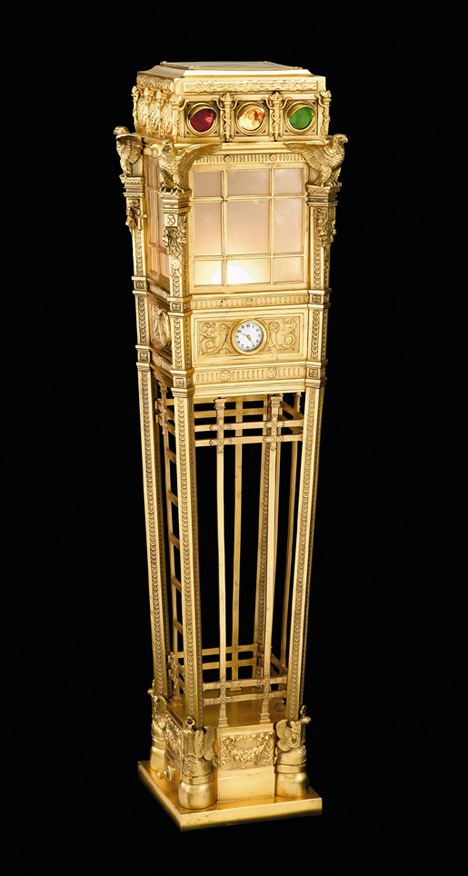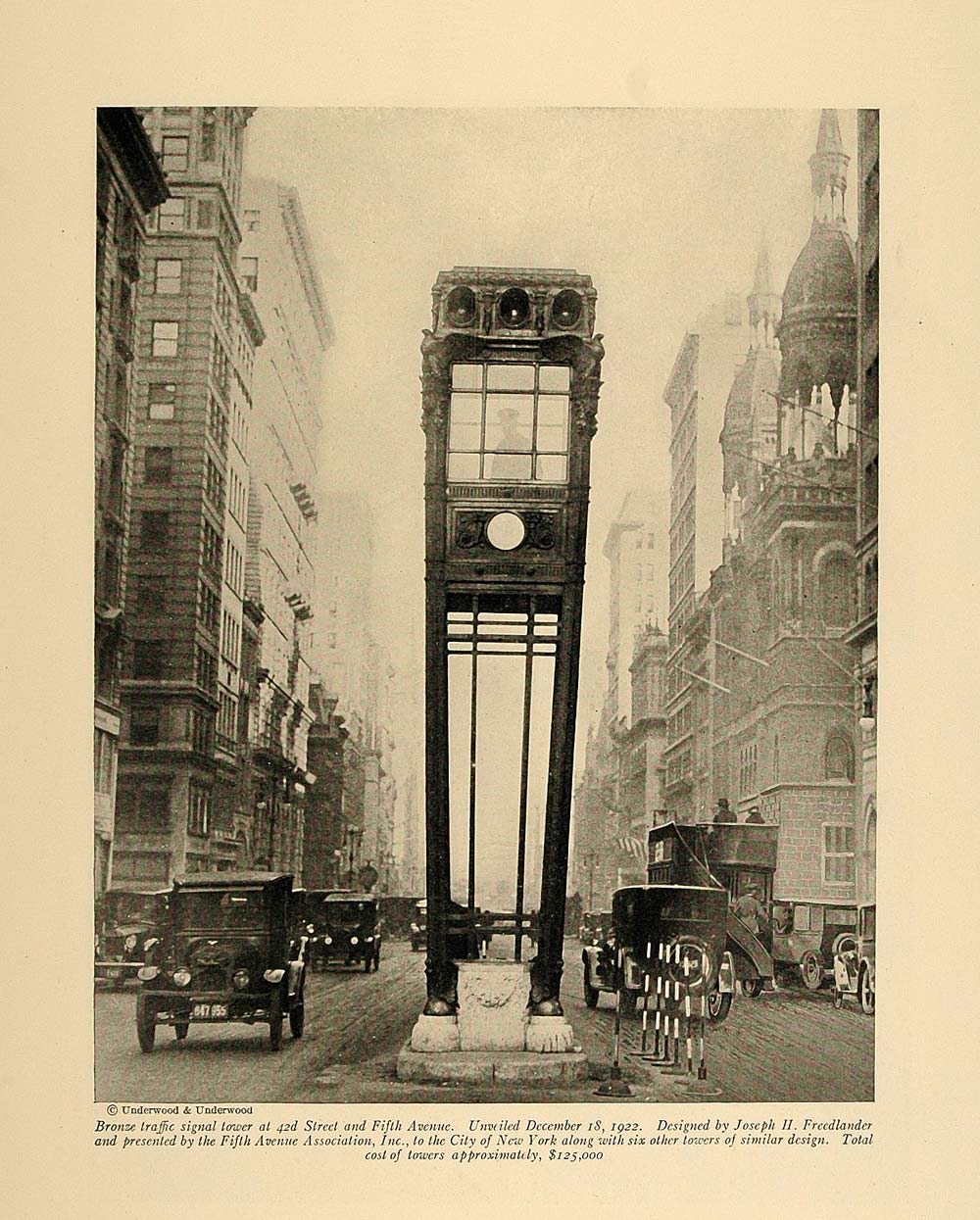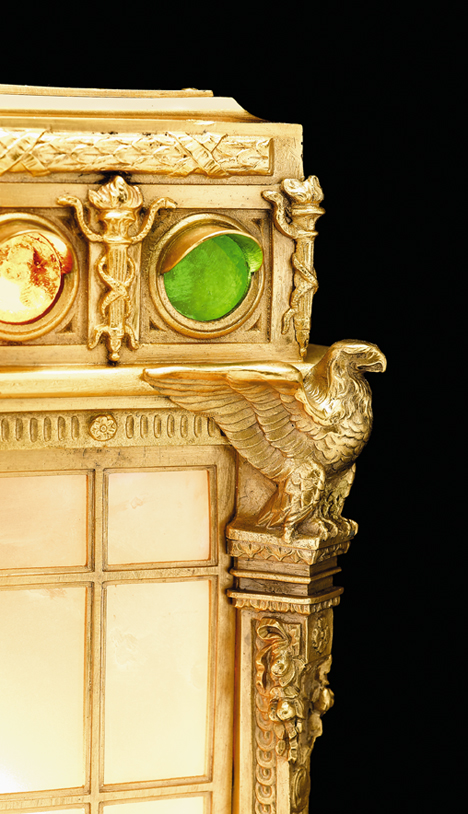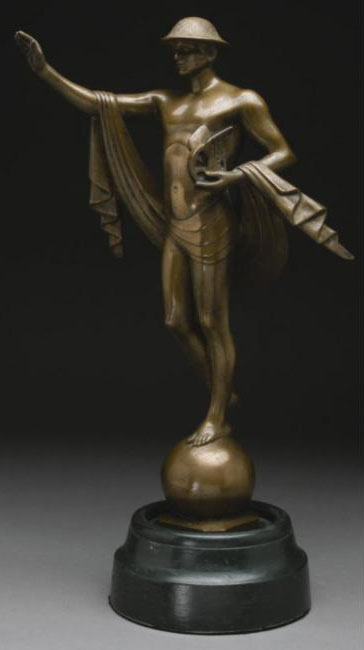
On Monday, April 20 a rare example of New York City history—a model of one of the city’s first traffic lights—will be auctioned at Freeman’s in Philadelphia. Dating from 1924 it relates to a 1920 design competition for a series of traffic control towers to be installed along Fifth Avenue. Leading architects submitted 130 plans to the competition, which was won by Joseph H. Freedlander, who later designed the building for the Museum of the City of New York.
Speaking of his design, Freedlander remarked, “There was no precedent to go by. Certainly none of the ancient cities of Europe had traffic towers.” So he featured nationalistic iconography on the towers including eagles and the seal of the City of New York. Beginning in December 1922, seven of the towers were erected—one each at 14th, 26th, 34th, 38th, 42nd, 50th, and 57th Streets—reportedly at a cost of $125,000. Each stood twenty-five feet high and was operated manually by policemen. The distinctive towers were documented in period photographs and postcards, and in the 1927 painting, Fifth Avenue, by Emily Noyes Vanderpoel.

The gilt-bronze and glass paneled model offered by Freeman’s (estimate $30,000-50,000) stands 25 1/4 inches high and is signed and dated “John Polachek 1924” for the John Polachek Bronze and Iron Company of Long Island, New York, which also cast the full-scale towers. In a period account of the unveiling in the New York Times Polachek commented, “I believe these towers represent the largest bronze order in the history of the business. Each tower weighs approximately five tons and is built of solid cast bronze on a heavy steel frame.”

Because of growing congestion on Fifth Avenue Freedlander’s traffic towers were short-lived and were removed beginning in 1929. None are known to have survived, although another model, identical to the one up for auction, is in the collection of the Museum of the City of New York, along with Freedlander’s competition drawing.
Freedlander went on to design the 14-foot tall traffic light poles that replaced the towers on Fifth Avenue—sleek neoclassical boxes surmounted by what are now iconic bronze and gold-leaf statutes of Mercury wearing a World War I helmet. One hundred and four lights of this design were installed beginning in 1931, but by 1964 they had all been replaced to be compatible with a citywide electronic signal system. Like Freedlander’s original traffic towers, very few of the Mercury statues are known to have survived: two are in the collection of the Museum of the City of New York, one is owned by the Fifth Avenue Association, and two others have been auctioned previously (Sotheby’s, 2004 and 1998).

